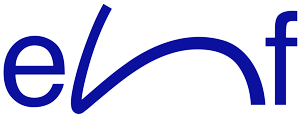When The New Normal Becomes Simply The Normal
Just a year ago, Minna Saadé’s workday was quite different from today.
She works as an International Business Development Manager at the University of Helsinki Centre for Continuing EducationHY+ Ltd, which offers tailored trainings for organizations and individuals globally. The main objective of HY+ is to improve the future world and well-being of people through enhancing learning, knowledge sharing, and sustainable development.
“I travelled a lot. There was this installed belief that in order to collaborate with our international partners it would have to be face-to-face,” Saadé says.
Obviously, this has changed, and Saadé’s workdays are spent in Zoom and Teams firmly in Helsinki, Finland.
This change has led to a new kind of flow in providing professional development trainings. The time-frame from the first contact with the customer to the point the training actually happens used to be much longer.
“Our clients are more aware of their training needs and specific areas of focus, and are now accustomed to online trainings which are fast to deploy. This is something that most likely will keep on going even after the pandemic situation is sorted out,” Saadé says.
When the coronavirus pandemic first hit, there was accelerated demand in remote trainings as Zoom, Teams and Google Meets were introduced to the mainstream.
It was around late spring when everyone was talking about The New Normal. Then came summer and things slowed down.
“After the initial response there became this period where everyone felt like waiting for what is going to happen next and it reflected in trainings,” tells Saadé. Now, things are picking up again.
“People are realizing the situation won’t just disappear and we must figure out how to keep life rolling on and about.”
Just a few months ago the new normal felt like something in the distant future, but now, all of a sudden, we are all living it; wearing a mask wherever we go, keeping a distance as well as we can, minding our hand hygiene like never before. The new normal is simply normal.
Remote trainings are different from on-site trainings. Remote trainings must be more intense, and the social element comes after.
“During on-site trainings there are also coffee breaks, lunch and mingling with others,” Saadé says. “Remote trainings should last few hours at maximum, and it is especially important to have something tangible, something that helps with everyday challenges.”
Innovative ideas for engagement in remote trainings are constantly developed.
Traditional lecture-based training does not work well, though lectures can be a part of it. In digital trainings it is possible to have more participants than in on-site training, and the session can be recorded, which can yet increase the size of potential audience. But a big part of the training should be spent in working on the cohesion of the group and active discussion.
HY+ customizes its’ trainings. The biggest area of expertise is in teacher training.
“The current situation has asked a lot of independence from teachers world-wide. Finnish teacher training is especially good at that as it is based on teacher’s self-reflection and his/her capability to work independently. All our Professional Development Trainings are based on these values,” Sáade says.
“One example of the brilliance of Finnish teachers is that last spring they had 48 hours to pull off remote teaching – and they made it happen.”
Find out more about what University of Helsinki Centre for Continuing Education HY+ could offer for your organization at https://hyplus.helsinki.fi/en/





